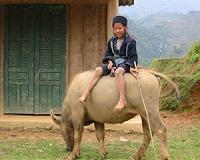| . |  |
. |
Champaign IL (SPX) Jul 29, 2010 Steering clear of crocodiles and navigating around massive submerged trees, a team of divers began mapping some of the 25 freshwater pools of Cara Blanca, Belize, which were important to the ancient Maya. In three weeks this May, the divers found fossilized animal remains, bits of pottery and - in the largest pool explored - an enormous underwater cave. This project, led by University of Illinois anthropology professor Lisa Lucero and funded by the National Geographic Society and an Arnold O. Beckman Award, was the first of what Lucero hopes will be a series of dives into the pools of the southern Maya lowlands in central Belize. The divers will return this summer to assess whether archaeological excavation is even possible at the bottom of the pools, some of which are more than 60 meters deep. "We don't know if it's going to be feasible to conduct archaeology 200 feet below the surface," Lucero said. "But they are going to try." The Maya believed that openings in the earth, including caves and water-filled sinkholes, called cenotes (sen-OH-tays), were portals to the underworld, and often left offerings there. Ceremonial artifacts of the Maya have been found in pools and lakes in Mexico, but not yet in Belize. Maya structures have been found near two of the eight pools the team surveyed. "The pools with the most substantial and most obvious settlement at the edge also turn out to be the deepest that we know," Lucero said. The divers so far have explored eight of the 25 known pools of Cara Blanca. The use of these pools at the end of the Late Classic period (roughly A.D. 800-900) corresponds to an enduring drought that deforested parts of Central America and - some believe - ultimately drove the Maya from the area. The need for fresh water could have drawn the Maya to the pools, Lucero said. No vessels other than water jars were found in the structures built near the pools. "They could have been making offerings to the rain god and other supernatural forces to bring an end to the drought," she said. Patricia Beddows, one of the divers and a hydrologist and geochemist at Northwestern University, found that the chemistry of the water in each of the pools was distinct. She also found that the water in Pool 1, the pool with the huge cave and a Maya structure at its edge, held the freshest water of the pools surveyed. But the water contained a lot of soluble minerals, Lucero said, making it problematic for anyone who used it as their primary water supply. Those who drank the water over an extended period would have been at risk of developing kidney stones, she said. The divers extracted core samples of the sediment at the bottoms of two of the pools. An analysis of the soil, debris and pollen in the cores will offer insight into the natural history of the cenotes and the surrounding region. Lucero recruited expert cave exploration divers for the expedition. She provided food, lodging and other basics, but the divers donated their time and expertise. The dive team included Robbie Schmittner, Kim Davidsson (an independent cave dive instructor), Bil Phillips, and videographer Marty O'Farrell, who produced the video. The research team also included archaeologist Andrew Kinkella, of Moorpark College. In Pool 1, Kinkella and diver Edward Mallon recovered ceramic jar shards in the wall of the pool just below the Maya structure. Three more divers, Steve Bogaerts, James "Chip" Petersen and still photographer Tony Rath will join the project this summer. Lucero has studied Maya settlements and sacred sites in Belize for more than 20 years, and works under the auspices of the Institute of Archaeology, which is part of the National Institute of Culture and History, Government of Belize.
Share This Article With Planet Earth
Related Links University of Illinois All About Human Beings and How We Got To Be Here
 New Hypothesis For Human Evolution And Human Nature
New Hypothesis For Human Evolution And Human NatureUniversity Park PA (SPX) Jul 26, 2010 It's no secret to any dog-lover or cat-lover that humans have a special connection with animals. But in a new journal article and forthcoming book, paleoanthropologist Pat Shipman of Penn State University argues that this human-animal connection goes well beyond simple affection. Shipman proposes that the interdependency of ancestral humans with other animal species - "the animal connectio ... read more |
|
| The content herein, unless otherwise known to be public domain, are Copyright 1995-2010 - SpaceDaily. AFP and UPI Wire Stories are copyright Agence France-Presse and United Press International. ESA Portal Reports are copyright European Space Agency. All NASA sourced material is public domain. Additional copyrights may apply in whole or part to other bona fide parties. Advertising does not imply endorsement,agreement or approval of any opinions, statements or information provided by SpaceDaily on any Web page published or hosted by SpaceDaily. Privacy Statement |